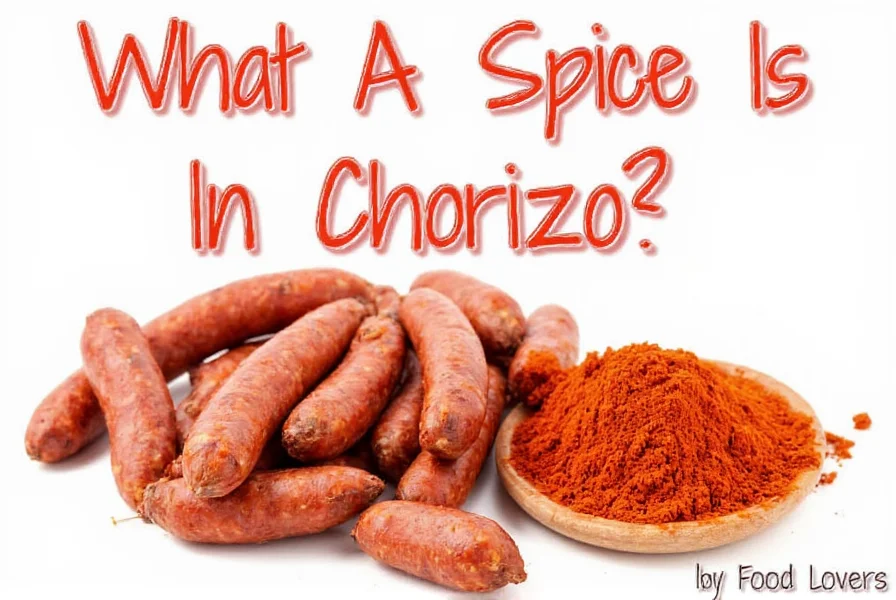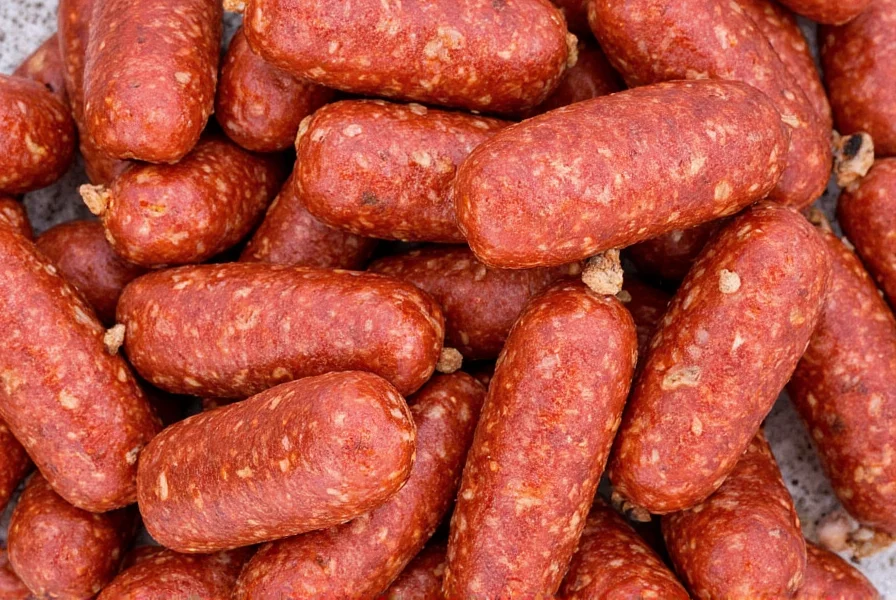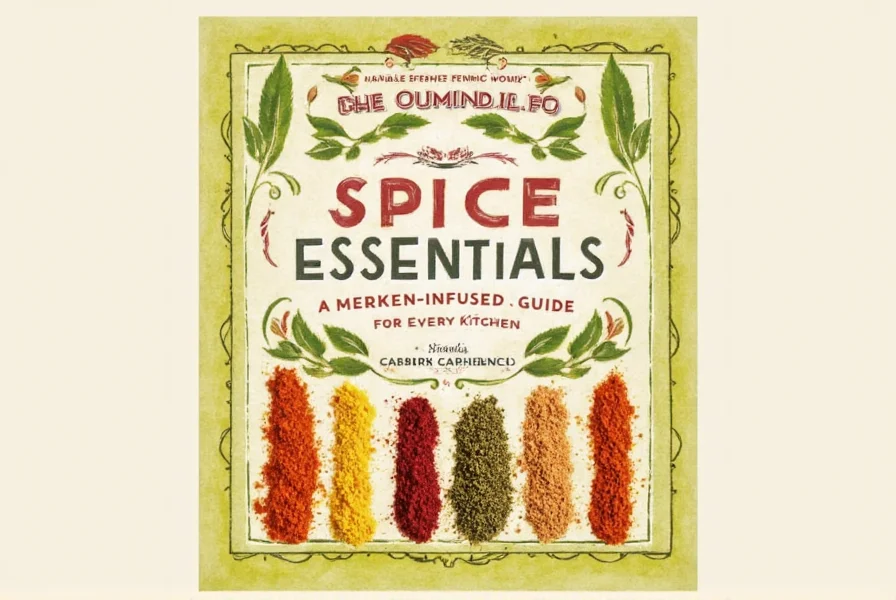Table of Contents
Introduction
Chorizo is seasoned with a blend of key spices including paprika (both regular and smoked), garlic, cumin, chili powder, and oregano. These ingredients create its signature smoky, spicy flavor profile. In this guide, we'll break down each spice's role, compare regional variations, and share cooking tips.

What Is Chorizo?
Chorizo is a type of sausage made from pork, typically seasoned with a blend of spices. It can be either fresh or cured, and it's known for its bold, smoky flavor. While the exact recipe may vary by region, one thing remains constant: the use of spices to elevate the taste.
Chorizo comes in many forms. In Mexico, it's often used in breakfast dishes like chilaquiles or in tacos. In Spain, it's a popular ingredient in tapas and stews. In the US, it's commonly found in sausages and breakfast meats. No matter where you find it, the key to its flavor lies in the spices.

Common Spices in Chorizo
So, what spice is in chorizo? The answer isn't as simple as "cumin" or "chili powder." It's a combination of several spices that work together to create that unmistakable flavor. Here are the most common ones:
- Paprika: A must-have in any chorizo recipe. It adds color and a mild, slightly sweet flavor.
- Garlic: Adds depth and a savory note.
- Cumin: Provides warmth and a nutty undertone.
- Chili Powder: Brings the heat and gives chorizo its signature spiciness.
- Oregano: Often used in Spanish-style chorizo for a herbal touch.
- Smoked Paprika: For that deep, smoky flavor.
- Salt and Pepper: Basic but essential for balancing the other spices.
Spice Profiles: A Flavor Comparison
| Spice | Flavor Profile | Role in Chorizo |
|---|---|---|
| Paprika | Mild, slightly sweet, and earthy | Provides color and base flavor |
| Cumin | Nutty, warm, and slightly bitter | Enhances depth and complexity |
| Chili Powder | Spicy, smoky, and pungent | Delivers the heat and boldness |
| Oregano | Earty, slightly peppery, and herbal | Adds a subtle, aromatic note |
| Smoked Paprika | Deep, smoky, and rich | Gives chorizo its signature smokiness |

Frequently Asked Questions
What are the main spices in chorizo?
The primary spices in chorizo include paprika (both regular and smoked), garlic, cumin, chili powder, and oregano. Salt and pepper are also essential for balancing the flavors. Spanish chorizo typically features smoked paprika and oregano, while Mexican chorizo often uses more chili powder and fresh garlic.
Is paprika the most important spice in chorizo?
Paprika is arguably the most defining spice in chorizo, particularly in Spanish varieties. It provides both the characteristic red color and a foundational flavor. Smoked paprika gives Spanish chorizo its distinctive smokiness, while regular paprika contributes to the color and mild sweetness. Without paprika, chorizo wouldn't have its signature appearance or base flavor profile.
What gives chorizo its red color?
The vibrant red color of chorizo comes primarily from paprika. Both sweet and smoked paprika contain carotenoids, natural pigments that give the sausage its distinctive hue. The amount of paprika used directly affects how intensely red the chorizo appears. Some commercial producers may also use small amounts of food coloring, but traditional recipes rely solely on paprika for color.
How spicy is chorizo typically?
Chorizo's spiciness varies significantly by region and recipe. Spanish chorizo tends to be mildly spicy with a focus on smoky flavors from smoked paprika. Mexican chorizo is generally hotter, using more chili powder or fresh chilies. Most chorizo falls in the mild to medium heat range, but some varieties can be quite spicy. The heat level primarily depends on the type and amount of chili peppers used in the spice blend.
Can I make chorizo without certain spices?
While you can substitute some spices, removing key ingredients will significantly alter the authentic chorizo flavor. Paprika is essential for both color and flavor - without it, you won't have chorizo. If you can't find smoked paprika, you could use regular paprika with a touch of liquid smoke. Omitting garlic would lose an important savory note. For dietary restrictions, you can adjust spice levels, but the core spice profile should remain intact for authentic chorizo flavor.
What's the difference between Spanish and Mexican chorizo spices?
Spanish chorizo relies heavily on smoked paprika (pimentón), garlic, and oregano, with minimal heat. It's often cured and can be eaten without cooking. Mexican chorizo uses more chili powder or fresh chilies for heat, along with vinegar, and typically contains no oregano. It's usually fresh and must be cooked before eating. The Spanish version emphasizes smokiness, while the Mexican version focuses more on heat and tanginess from the vinegar.
Cooking Tips for Chorizo Enthusiasts
If you're a fan of chorizo, here are some tips to make the most out of it:
- Use Fresh Chorizo: Fresh chorizo has a more vibrant flavor than pre-cooked versions. Cook it in a pan until crispy for the best texture.
- Pair It with Complementary Flavors: Chorizo pairs well with eggs, potatoes, beans, and tortillas. Don't be afraid to experiment!
- Adjust the Heat Level: If you prefer less spice, reduce the amount of chili powder or smoked paprika. For more heat, add a pinch of cayenne or crushed red pepper flakes.
- Make Your Own Chorizo: Try making homemade chorizo using a mix of the key spices. It's easier than you think and allows you to control the flavor exactly how you like it.
Buying Guide: Choosing the Right Chorizo
When shopping for chorizo, there are several factors to consider. Here's a guide to help you choose the right product for your needs:
Types of Chorizo
- Spanish Chorizo: Cured and ready to eat. Often used in tapas and stews. Best for slicing and serving cold.
- Mexican Chorizo: Fresh and requires cooking. Ideal for tacos, breakfast, and stews.
- US Chorizo: Typically made with pork and seasoned with a mix of spices. Available in both fresh and cured forms.
Key Features to Look For
- Ingredients List: Check for natural spices like paprika, garlic, and cumin. Avoid products with artificial additives.
- Heat Level: Some chorizo is mild, while others is extremely spicy. Choose based on your preference.
- Brand Reputation: Look for trusted brands that prioritize quality and traditional methods.
Best Uses and Occasions
- Breakfast: Serve with eggs, potatoes, and tortillas.
- Tacos: Use in tacos al pastor or as a topping for nachos.
- Tapas: Pair with olives, cheese, and bread for a Spanish-inspired snack.
- Stews and Soups: Add to lentil soups, bean dishes, or paella for extra flavor.
Conclusion
Now that you know what spices are in chorizo, you can appreciate the complexity behind this flavorful sausage. From the smoky paprika to the fiery chili powder, each spice plays a role in creating the bold, satisfying taste that makes chorizo so special. Whether you're a professional chef or a home cook, understanding these ingredients will help you make the most of this versatile ingredient. So next time you bite into a juicy chorizo taco or savor a slice of Spanish chorizo, you'll know exactly what makes it so delicious.










 浙公网安备
33010002000092号
浙公网安备
33010002000092号 浙B2-20120091-4
浙B2-20120091-4